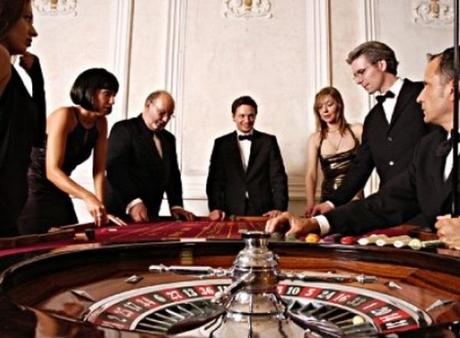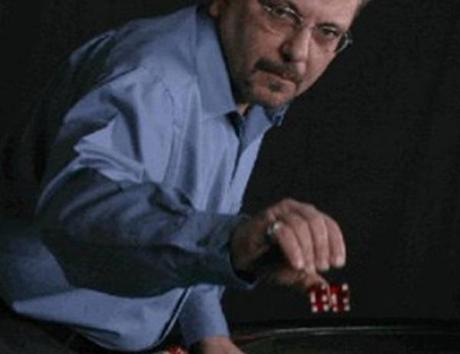A trip to the casino is usually both an exhilarating and hopeful proposition. The unassuming public gets drawn in by the sounds of ringing slots, bright lights, free alcohol, and the odd chance of striking it rich. Everyone knows that the games are always slanted in the casino’s favour, and big winners are incredibly rare – but there’s always that sliver of hope.
Today we bring you ten stories of people who didn’t wait for lady luck to grace them with her presence but went out and dragged her with them into the casino, kicking and screaming. Some use ingenious strategies, some with insider help, and some with healthy doses of what can only be described as luck.

Golden Nugget mini-baccarat tournament
Sometimes a simple observation can help a gambler gain an advantage, and such was the case in April 2012. A group of friends noticed that the same hands kept coming up, time after time. More gamblers soon caught on, eventually taking the Golden Nugget for nearly $1.5 million.

Don Johnson, blackjack king
Exploiting the greed of casinos will certainly put you on their bad side, and that’s why Don Johnson (no, not the Sonny Crockett one) is banned from almost every casino in America. As a high-roller, Johnson enjoyed a number of rules negotiated with the casinos, such as being able to split or double down more than a usual bettor and the house standing on a soft 17. What’s more, he negotiated compensation for his losses, with the casino sometimes compensating up to 20% of his losses. By combining these new rules with blackjack strategy, Johnson was able to win over $17 million, including almost $6 million in a single night from the Tropicana in Atlantic City.

Michael Shackleford, the Wizard of Odds
While he hasn’t taken any major pots or won any large bets, Michael Shackleford is still one of the most polarizing figures in gambling. A former actuary, he applied his analysis of mathematics to casino games, creating strategies usable against all types of games. While these strategies are available to the players and have made a number of gamblers quite wealthy, the casino industry and game-makers have also employed him to develop games and change the odds. The saying goes, “If you can’t beat ’em, join ’em,” but Shackleford has managed to do both.

Joseph Jagger, 19th-century data cruncher
In 1877, Las Vegas was a flat patch of sand, and Atlantic City had just begun to develop its tourism business, aiming to become a health resort. Across the ocean, Monte Carlo was the international gambling hub and was being visited by one Joseph Jagger, an engineer in the cotton manufacturing industry. Applying theories learned in the industry, Jagger sent six clerks to observe roulette wheels to see if certain mechanical imbalances could make one a vulnerable target. After processing the data, Jagger found a target and proceeded to “break the bank”, taking the casino for nearly two million francs over the course of the weekend – adjusted for inflation, the equivalent of nearly five million American dollars today. He wasn’t the first person to take the casinos in Monaco for a ride, but he is one of the originators of it.

Gonzalo Garcia-Pelayo and wheel bias
Much like Joseph Jagger, Garcia-Pelayo targeted roulette as a game to gain an edge. While he did not have the engineering background and was working with wheels much more precise than what Jagger worked against, Garcia-Pelayo felt that due to wear and tear, certain roulette wheels would develop certain biases towards numbers. Through the observation of thousands of spins, he was able to build profiles of roulette wheels and use this to his advantage. Eventually barred from almost every casino in the world, Garcia-Pelayo managed to rack up almost $1.5 million in winnings.
The MIT Blackjack Team
Possibly the most famous incident of casinos being taken by players, the MIT Blackjack Team operated for almost 20 years in various forms, breaking casinos across the United States. While the basis of their operation was the same card counting methods used before, they deployed a team of players that allowed them to gather comprehensive data and also disguise some of the patterns of betting made by individual card counters. With a bevvy of investors and players all receiving cuts, it is not known just how much the team took from casinos over its existence.

The Crown Casino team
They’re not saying who or exactly how, but in March of 2013, the Crown Casino in Melbourne, Australia, was taken for nearly $33 million in only eight hands of poker. The little that has been released describes the team as three men using a hijacked feed of the security cameras to see all of the hands at the table. A high-roller made the wagers, facilitated by a VIP manager and assisted by a third man who was able to see the security feed and deliver insight on the hands in play.

Ron Harris and Reid Errol McNeal
Random number generators are just that – random. So how can they be beaten? When Reid McNeal tried to redeem the jackpot for a keno ticket at Bally’s in Atlantic City, executives were suspicious, asking for the jackpot in cash. Gaming investigators found that McNeal was aided by Ron Harris, a computer programmer who worked for the Nevada Gaming Control Board. Through his work with them, McNeal had developed a program that could determine the numbers that would come up from the number generator beforehand and used this to his advantage. Using this program, they were able to target the jackpot and beat Bally’s.

Edward Thorp
Long before the MIT team, one man changed blackjack forever. At the start, Thorp was simply a doctor in mathematics who saw a practical application of probability theory, and he treated his work more as research than a way to beat the casinos. By feeding odds and hands through a computer, Thorp was able to create a strategy that could provide the player with a small advantage over the house, known as card counting. He then combined this strategy with the Kelly theory, another probability theory that dictated wagering, into a method that could provide large, consistent returns. While Thorp himself only made a modest amount using his method, his resulting books made him a small fortune, with Beat the Dealer becoming the most influential blackjack book ever, one that is still used almost 50 years later by blackjack aficionados.

Dominic LoRiggio, the “Man with the Golden Arm”
Using physics and the mechanics of dice, “controlled shooting” is a legal practice. Through practice, Dominic LoRiggio has been able to hone this skill so that, using a certain grip and motion, he claims to be able to get the dice to bring up whatever numbers he needs. While many claim this to be impossible, LoRiggio’s track record and the number of bans he’s received from casinos back him up.
The reason was not any sophisticated system – the card company had delivered the decks without pre-shuffling them, so the same sequences would always come up. The casino, certain that it was being scammed, refused to pay out $1 million of their winnings and decided to sue them for the rest of the money. Luckily four months later, the judge decided to side with the winners, ruling that they had not cheated in any way.
Casinos spend a lot of time watching the players and dealers, but you can be sure after this, they’ll spend some time watching their suppliers as well.

